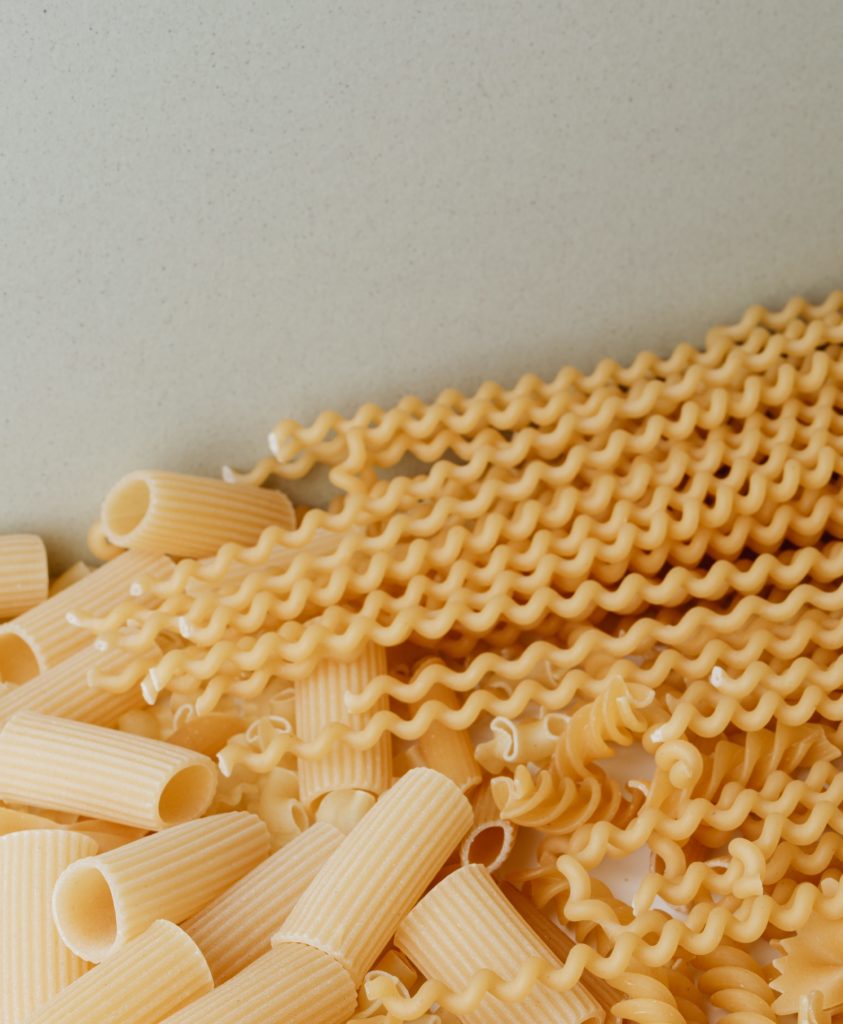
Does dry pasta have an expiration date? or is it all marketing?
Dry pasta, like any other food you can buy at the grocery store, has an expiration date. You might have even thrown out some perfectly good dry pasta just because it was past its expiration date. But would it really have been dangerous to eat them? The truth is if you ask your parents or grand parents, they’ll tell you that many products had a way longer shelf life when they were young than they do now, and that is particularly true for dry pasta. For centuries dry pasta didn’t even have an expiration date! Can you imagine that?
So, were our parents and grandparents really eating spoiled food that might have been bad for them? Or are brands and regulators playing it way to safe today, setting shorter shelf-life dates for products such as dry pasta, just to be on the safe side and protect themselves from any liabilities?
There is no easy answer to this question, but we can try to look at it from a few different angles. Let’s start with the history of pasta and see how long it typically lasts. Then we’ll explore what might cause it to go bad and whether there are any health risks associated with eating expired noodles. Finally, we’ll give you our opinion on whether you should pay attention to those expiration dates or not.
History of pasta
Pasta is a food that has been around for centuries, and its shelf life used to be a lot longer than it is today. In fact, until the early 20th century, there was no such thing as an expiration date for dry pasta! It was only when mass production and processing of food became more common that expiration dates started to appear on products.
The truth is, the concept of an expiration date is a relatively new one, and it’s not always an accurate indicator of when a food actually goes bad. The main reason expiration dates exist is for food safety. But there are other factors that can affect the safety of food, such as how it’s stored, whether it’s been contaminated, and so on. So always keep these two sides of the coin in mind:
- Just because a food has an expiration date that’s sometime in the future, doesn’t necessarily mean it’s safe to eat, it might have gone bad before it’s expiration date for a number of reasons, which we will go into more detail in just a minute.
- The same way if you have a package of dry pasta that is over it’s expiration date, it doesn’t necessarily mean it’s has gone bad. It probably is still perfectly safe to eat if it has been properly store and shows no signs of deterioration.
What causes pasta to go bad?
There are two main things that can cause pasta to go bad, sometimes even before it’s advertised expiration date: moisture and oxygen.
Moisture is the main enemy of dry pasta. When pasta are stored in a humid environment, it can start to grow mold or mildew.
Oxygen can also cause pasta to go bad. When pasta are exposed to oxygen it begins to oxidize and turn brown.
So, if pasta is stored in a humid or wet environment, or if it’s exposed to oxygen, it can go bad, even before its expiration date.
How should dry pasta be stored to last longer?
A factor that is key to guaranty that dry pasta lasts until it’s advertised expiration date or longer is the way it’s stored. Pasta that’s stored in a cool, dry place will last longer than pasta that’s stored in a warm, humid environment.
This is why most brand these days opt for hermetic packaging options that help guaranty the preservation of the product in optimal conditions, without being exposed or affected by external factors.
It is also worth mentioning that even within dry pasta, there are some types that are easier to store than others. For example, generally speaking, whole wheat pasta tends to last longer than white flour pasta.
So, now that we know what affects the shelf life of pasta, let’s take a look at the health risks associated with eating expired noodles.
What are there health risks associated with eating expired pasta?
Generally speaking, the biggest risk associated with eating expired pasta is food poisoning. Pasta that’s gone bad can contain harmful bacteria that can cause vomiting, diarrhea, and other symptoms of food poisoning. It can also contain toxins that can be harmful to your health, even without making you sick. Remember, our grand parents might have eaten pasta that we would have considered expired just fine, but the life expectancy was also shorter in the early 20th century, so as imperfect as expiration dates might be, eating spoiled food is a real danger for our health.
In some cases, expired pasta can also cause allergic reactions. So, if you’re allergic to mold or mildew, you should be extra careful.
So, how do I tell if my dry pasta is good to eat or not?
The first thing we want to make clear is you should always pay attention to the expiration date on you pasta box (and any other food you are about to cook/eat for that matter). But like we’ve seen before, the fact that something is not expired doesn’t 100% guaranty it hasn’t gone bad, the same way if your pasta box is over it’s expiration date it might still be perfectly fine to eat.
Performing a quick visual examination of the pasta before cooking is always a good idea and will reinsure you about quality and state of the food you are about to it.
In the case of pasta these are some things you should be keeping an eye out for:
- After opening your pasta container, let it air for 5 to 10 minutes and smell it. If bacteria has started to develop you will smell a rancid scent.
- Look for changes in color. Your dry pasta’s colors should be uniform. If the edges have started to become darker that pasta probably isn’t good to eat anymore. And eve if it was it’s flavor and texture might be all wrong.
- Look out for mold spots. If the mold is advanced you will see green distinctive green spots. If the most isn’t too advanced you might only be able to spot tiny thin white hairs on your pasta, like if they were covered in velvet. In both cases that pasta is NOT safe to eat and you should through it away.
If you dry pasta is past it’s expiration date but does not show any of the symptoms listed above, it is probably still good and perfectly safe to eat.
Conclusion
For centuries dry pasta was considered to have a virtually infinite shelf life if properly stored. Now most brand these days set an expiration date for dry pasta of 1-2 years… Science has evolved a lot in the past 50 years, and safety regulations that follow that science have been set in place for our own good, but it is impossible for regulations to be perfect and contemplate every particular case.
Dry pasta is one of those cases where the regulation is on the safe side and probably too strict, resulting in tons of perfectly good food going to waste every year in the United States and around the world.
For dry pasta, we recommend using your best judgement to determine whether the product is still good to eat or not. The expiration date is one of the parameters you can use make a decision, but always combine it with other factors we’ve covered in this article such as smell, color and signs of mold.


[…] of eggs and flour. It’s usually sold in the refrigerated section of the grocery store and has a shorter shelf life than dry […]